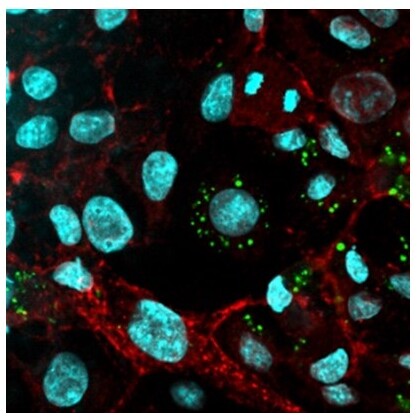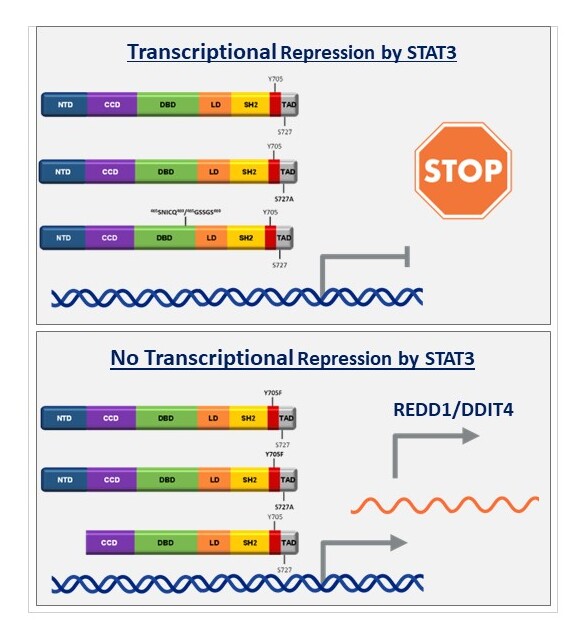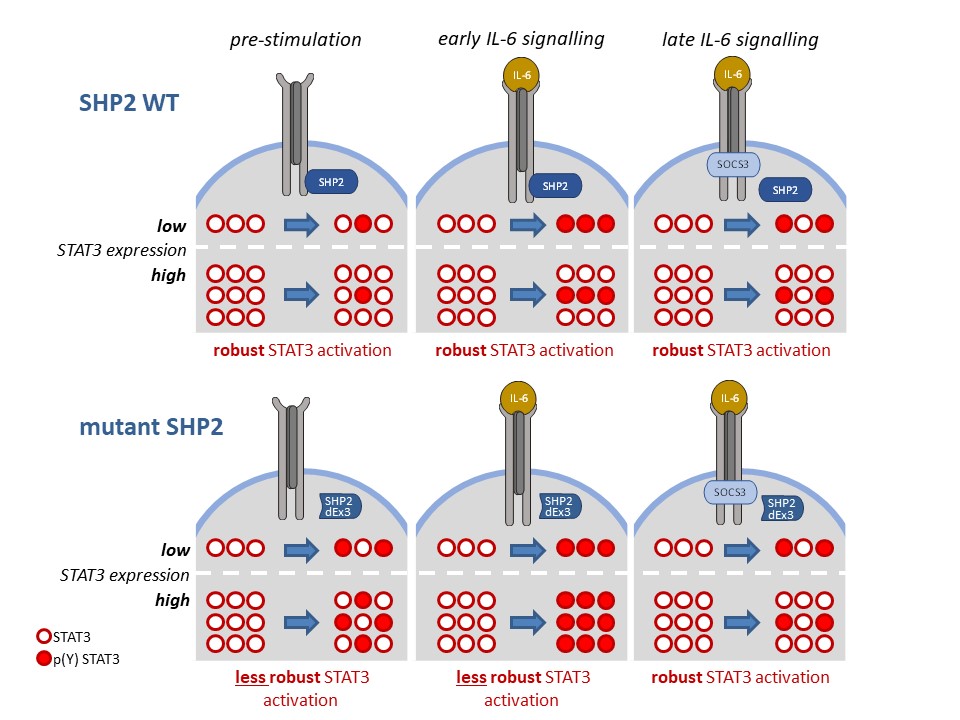Research
Cytokines (e.g. Interleukin-6, IL-6) are mediators of the immune system, which are secreted due to infection or injury. They regulate the differentiation and activation of immune cells, and coordinate inflammatory reactions. In this way, cytokines help to restore homeostasis. Both hyperactivity of pro-inflammatory cytokines and reduced activity of anti-inflammatory cytokines contribute to serious diseases (e.g. allergies, rheumatoid arthritis, cancer or autoimmune diseases). IL-6 is a central mediator of inflammatory and developmental processes in the body. It is a mayor inducer of acute-phase protein expression in the liver, regulates the differentiation of B and T cells, but also influences the function of blood vessels. Furthermore, it serves as a survival and differentiation signal for neuronal cells.
Cytokines bind to membrane-bound receptors and activate intracellular signalling cascades, resulting in the activation of transcription factors. Activated transcription factors bind to specific DNA segments in the nucleus and induce the expression of target genes. The sequential activation of signalling molecules in signalling cascades enables rapid signal amplification, complex regulation, and the integration of signals initiated by various soluble messengers or cellular stress. Communication between the cells of a body is influenced by several factors. These include the local concentration of messengers, the availability of soluble receptors and cellular heterogeneity.
The stimulation of IL-6-induced signal transduction occurs via a receptor complex consisting of the IL‑6 receptor α (IL-6Rα) and gp130. After binding of IL-6 to the receptor complex, tyrosine kinases associated with gp130 (JAK1, JAK2 and TYK2) are activated. The phosphorylated tyrosine residues serve as binding motifs for molecules that facilitate the activation of the MAPK (mitogen activated protein kinase) cascade, as well as the PI3K (phosphoinositide 3-kinase)/mTOR (mammalian target of rapamycin) and the JAK/STAT (signal transducer and activator of signal transduction) signalling pathways.
Central elements of these pathways are the activation respectively inactivation of proteins by posttranslational modifications, conformational changes or altered cellular localization. Multi-site docking proteins (e.g. Gab1), which provide a binding platform for signalling molecules and regulatory proteins, have an important function here. Furthermore, regulatory proteins fulfil essential tasks in signal transduction. They modulate, terminate, and integrate signalling processes and contribute to robust information transmission. Regulatory proteins include phosphatases (e.g. SHP2) and kinase inhibitors (e.g. the feedback inhibitor SOCS3).










